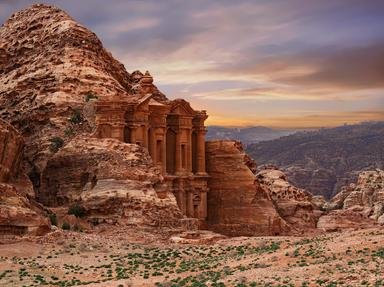Quiz Answer Key and Fun Facts
1. ANIMALS: Animals endemic to Yemen include many bird species. Which of these islands, the country's largest, lends its name to seven of Yemen's 13 species of endemic bird?
2. BRAIN TEASERS: Find Yemen's capital city hidden in the following sentence. "Why is Ana always reading books?"
3. GEOGRAPHY: Although situated in Asia, the Yemeni mainland is only approximately 20 miles from the African continent at the closest point. Which
African country is at the other end of this 20 miles, across the Bab-el-Mandeb strait, which joins the Red Sea to the Gulf of Aden?
4. HISTORY: Which character in the Bible is believed by many scholars to have come from the area that is now Yemen?
5. HOBBIES: Which of these is a meat stew with a hot sauce called sahawaq (or skhug) made from peppers and spices? It is regarded as Yemen's national dish and normally eaten at lunch.
6. MOVIES: Yemeni cinema is not a large industry; the first Yemeni film debuted at the Cannes Film Festival in 2005. Directed and written by British Yemeni Bader ben Hirsi and filmed on location in Yemen, which of these is it? It tells the story of Tariq, who must choose between an arranged marriage and the woman he has fallen in love with.
7. MUSIC: Which of these is the name of the traditional Yemeni music of sung poetry, during which men usually chew the khat leaf and are accompanied by a lute called a qanbus?
8. PEOPLE: Which of these is a Yemeni journalist and politician who shared the 2011 Nobel Peace Prize, attaining various "firsts" including being the first Yemeni, the first Arab woman, and (at the time) the youngest recipient to win the prize?
9. RELIGION: Nearly all Yemenis are Muslim, approximately half belonging to Sunni Islam and half to Shi'a. Which of these religions has only a few hundred followers left in Yemen, after most of them left the country in two waves of mass emigration, most recently around 1950?
10. WORLD: Yemen's official language is Arabic, but various other languages are spoken there including Mehri and Soqotri. To which language family do these belong?
Source: Author
reeshy
This quiz was reviewed by FunTrivia editor
trident before going online.
Any errors found in FunTrivia content are routinely corrected through our feedback system.


